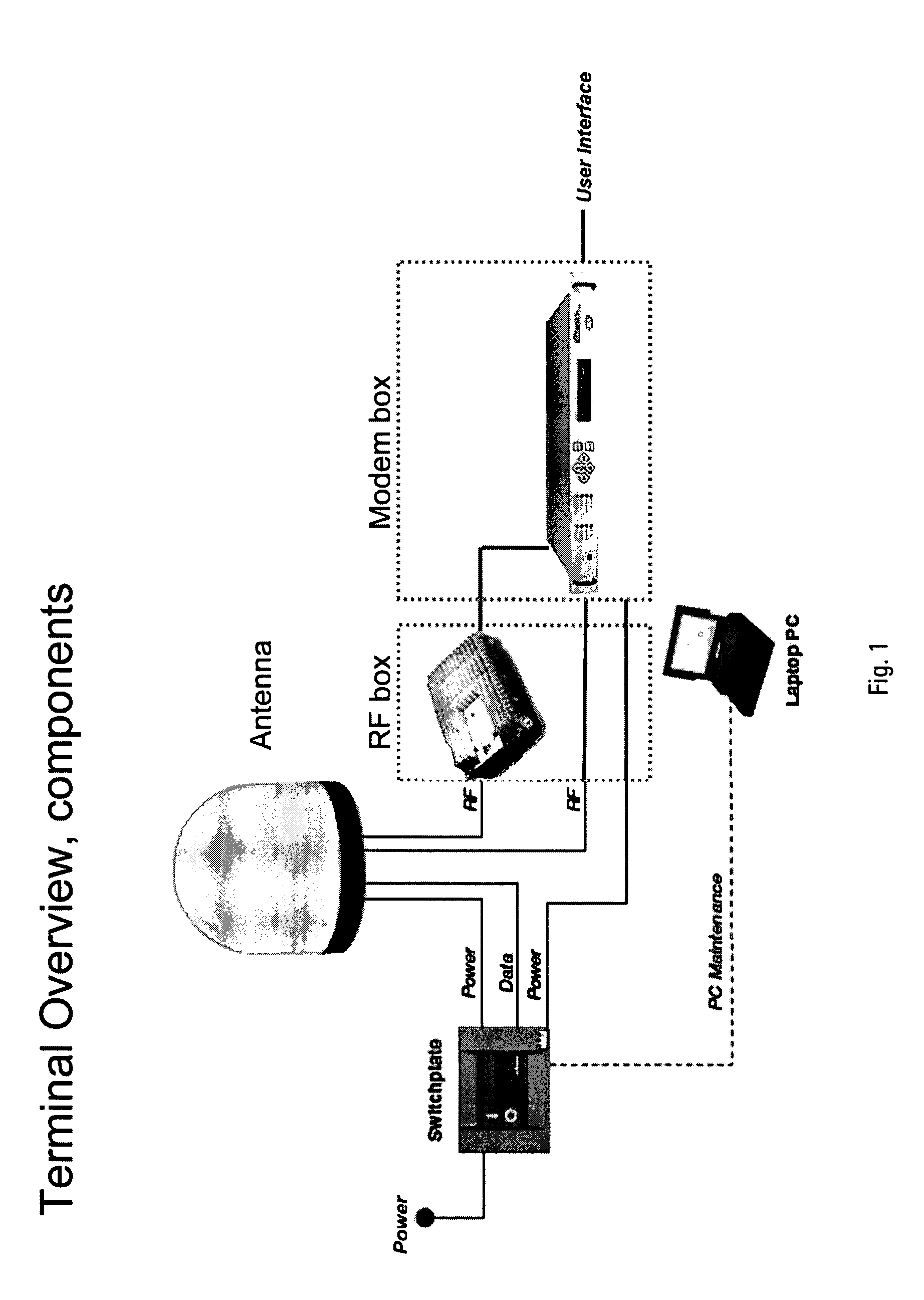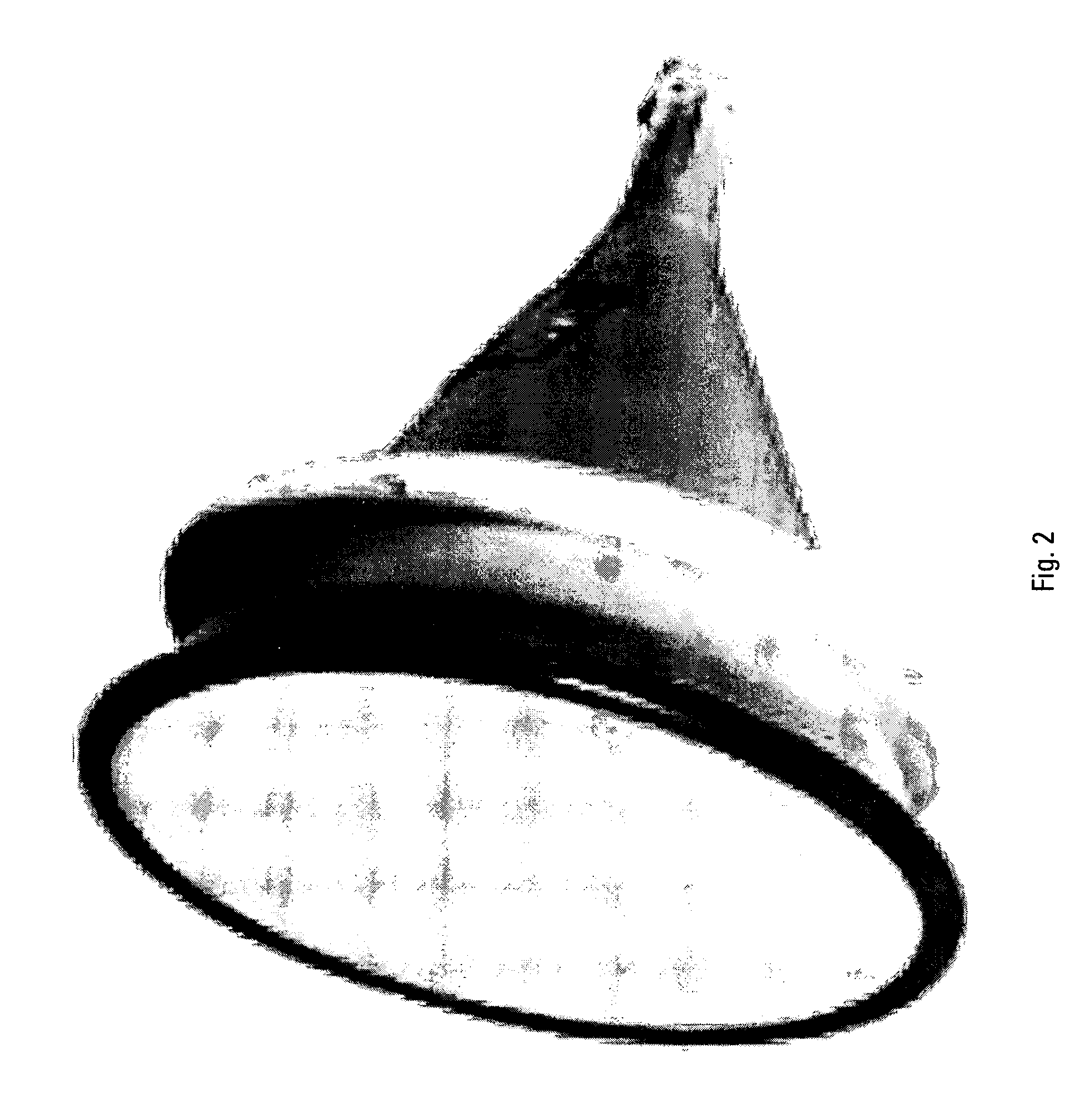Antenna system for communications on-the-move
a technology of satellite communications and antenna arrays, applied in the direction of antenna arrays, electrical devices, antenna adaptation in movable bodies, etc., can solve the problems of reducing the efficiency of the reflector system, and reducing the effective illumination of the surface area, so as to improve the robustness of the system, simplify the handling and integration of the vehicle, and high efficiency
- Summary
- Abstract
- Description
- Claims
- Application Information
AI Technical Summary
Benefits of technology
Problems solved by technology
Method used
Image
Examples
Embodiment Construction
[0044]This description, including the figures, describes embodiments that illustrate various aspects of the present invention. These embodiments are not intended to, and do not, limit the scope of the invention to particular details.
[0045]The present invention describes a small terminal used for COTM in communication with a geostationary or geosynchronous satellite to and from a land mobile, maritime or airborne vehicle. Various embodiments of aspects of the invention may improve system robustness and simplify handling and integration on the vehicle. The use of a high efficiency antenna makes it possible to use a smaller aperture than required in a traditional reflector design.
[0046]The features of the invention include, but are not limited to, the following highlights:[0047]Highly efficient antenna system to minimize system size;[0048]Minimization of RF losses internal to the system will reduce the required input power to the system and increase the system sensitivity (G / T defines ...
PUM
 Login to View More
Login to View More Abstract
Description
Claims
Application Information
 Login to View More
Login to View More - R&D
- Intellectual Property
- Life Sciences
- Materials
- Tech Scout
- Unparalleled Data Quality
- Higher Quality Content
- 60% Fewer Hallucinations
Browse by: Latest US Patents, China's latest patents, Technical Efficacy Thesaurus, Application Domain, Technology Topic, Popular Technical Reports.
© 2025 PatSnap. All rights reserved.Legal|Privacy policy|Modern Slavery Act Transparency Statement|Sitemap|About US| Contact US: help@patsnap.com



